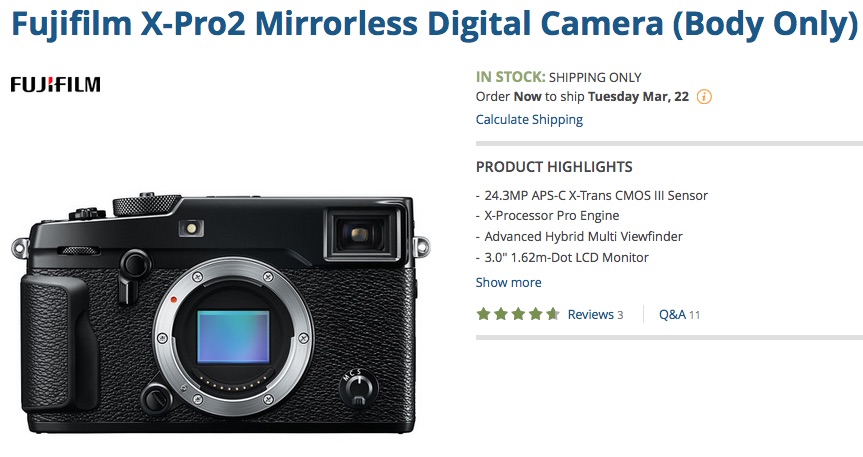
Hi X-folks
Recently I visited my buddy Andrea from SonyAlphaRumors and we went out for some beers, rumor talk and of course to take some shots. On that day I had the XF 18-135 on my X-T1. Andrea is a pure prime shooter. He looked at me, saw the XF 18-135 and said that the only zoom lens that makes sense to own is a super-zoom, because you might sacrifice a bit of IQ, but you get a very practical allrounder.
And I have to say, that since I own the XF18-135, the other two zooms I have, the 18-55 and 55-200 are not really just collecting dust, but I use them way less then I used to in the past.
Is it my favorite lens? Not really. But there is one X-shooter, who goes against the flow and declares it his favorite lens! It’s Fuji X Forum member darknj.
But discover more about X-shooter darknj in today’s “Behind the X-gear” episode, a 360 degree talk about the X-system and photography in general. Enjoy :-)
If you also want to have the opportunity to be interviewed & featured on FujiRumors, all you have to do is to join our Fuji X Forum Community, share your pics & thoughts there, and you might be the next one :) .
Previous “Behind the X-gear” Episodes:
Episode 1 – Milandro: A talk with X-shooters around the World… and about the X-series SOUL
Episode 2 – Trenton: A talk with “photoholic” X-shooter Trenton… and why the X-T1 is perfect for Lord Voldemort
Episode 3 – Mehrdad: A talk with Fuji X Forum member & official Fujifilm X-photographer Mehrdad
Episode 4 – Tom H: Meet Tom H, the X-shooter with the Coolest Office in the World
Episode 5 – quincy: Meet Quincy, the X-shooter, who made me drop my coffee with his amazing #1 Forum post!
Episode 6 – donpino: Meet Don Pino, the FXF member, who shared the Most Liked Images on the Forum!
Tell us something about you
Professional Photographer or Amateur or something in between?
Clearly something in between, I am a freelance worker and photography just happen to be part of my skills. But I am thinking of clearly progressing more into photography this year. I have a wedding to cover end of April along several possible baby/child/family portraits for steady income.
What is your kind of photography? (Motives, Approach …)
When not doing professional work, I do mostly events, some streets and life when possible. My photography just need to please me, I don’t often share thing unless I am covering an event or putting things up for friends.
I also travel to Asia one per year more or less that allows me to always get nice pictures back.
Where can we find more about you on the web (website, Flickr, Facebook, portfolio)
I do have Flickr account where I put a whole bunch of stuff, small events coverage, my personal life along family, camera/lenses testings and whole bunch of other things. Nothing really fancy over there. It serves mostly as cloud backup.
What’s your favorite image taken with a Fuji?
Most likely this one from my son, althought kind of cheated on the Fuji system as it was taken with an [shoplink 43831 ebay]Helio M44-2[/shoplink] with a focal reducer.
Your Move to Fuji
What’s the main reason for you to own a Fuji?
IQ/size ratio, it is about the highest IQ for the size/weight. Followed by the close second of colors. But I never did a full switch, cameras are just tools for me, each system have their own advantages or issues.
Is there something you miss from your previous system?
The AF speed of Nikon cameras, I really miss it at times when I only have my X-T1 with me but I am planning to get myself a D500 as complementary to the X-T1.
What’s your favorite lens?
I am going to go against a lot flow and say the 18-135, it is a super practical lens, it isn’t the best IQ but not having to swap lenses can be invaluable at times.
What’s your favorite camera bag?
Currently it’s the Everyday Messenger from Peak Design.
What’s in your bag?
That highly depends on the needs, I load my bags very differently depending on where I go, what I am going to shoot and if I need to be out for long or if I need to edit pictures on the fly. Let just say that on regular basis, I have my X-T1, one of either the 27 or the 35 along a second lens, could be anything from the 18-135, the 10-24 or one of legacy lenses with both the focal reducer and the dumb adapter.
Your Advice to Fuji
Which lens, that is not yet in the roadmap, would you like Fuji to make?
In all honesty, I don’t have that much need of lens specialization, the current line-up does fill my needs, if I could really make a wish, a pancake 23 would be great, either F2 or F2.8.
Tell Fujifilm what’s the main thing they should still improve in the X-series system via Firmware and/or Hardware
Bracketing ! It’s freaking 2016, being limited to a +/- 1 EvF is just laughable, my elderly D5000 can do +/- 2 EvF and it’s over 6 years old.
Decisive Questions
OVF, EVF or Display?
Either EvF or OvF depending on the camera, but don’t do hybrid, it never really work well, at least not within my own trials.
Rangefinder style or DSLR shape?
DSLR, I tried several time to use the rangefinder cameras and they never fit well in my hands, and I already have small hands. I mean seriously, there are women with bigger hands than I do… So yeah, no X-ProX cameras for me.
RAW or JPEG?
Raw + Jpeg, one day I will be confident enough to shoot only Jpegs.
Curiosity & Customize you X
You most & you least used feature in Fujifilm cameras (like film simulations, build-in RAW converter, Extended DR(100-200-400), advanced filters, panorama, digital split image etc…)
Film mode, seriously it’s kind of poorly done when compared to the other brands in class. I do understand they need to put it there because all the others manufacturers are doing it too but it makes little to no sense to me to have a half baked feature. I am a practitioner of, either do it well or don’t do it at all.
Which function is a Must Have feature to place on the FN-buttons of your camera?
The X-T1 has all the controls I need for what I use it for. Some of the menus and sub-menu could be a bit better designed but in overall, I am rather happy about how they did it.
What’s Your favorite film simulation
Provia first, Astia second and Velvia for third. I really like how they have done it and they all look very beautifully done.
Your favorite photography quote.
“The best camera is the one you have with you.” I really like that one, hence me selecting most smartphone based on how good it could take a picture.”




